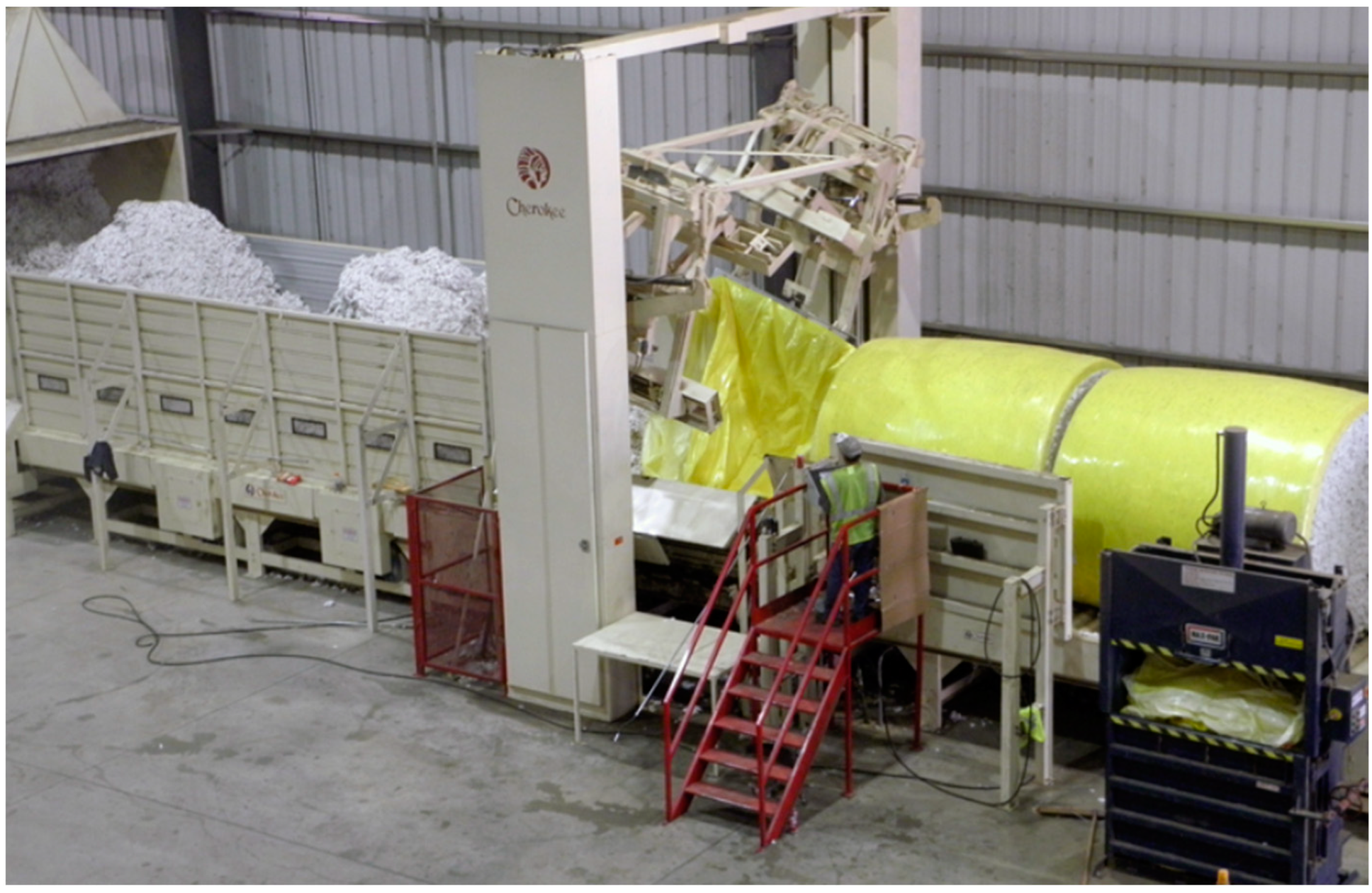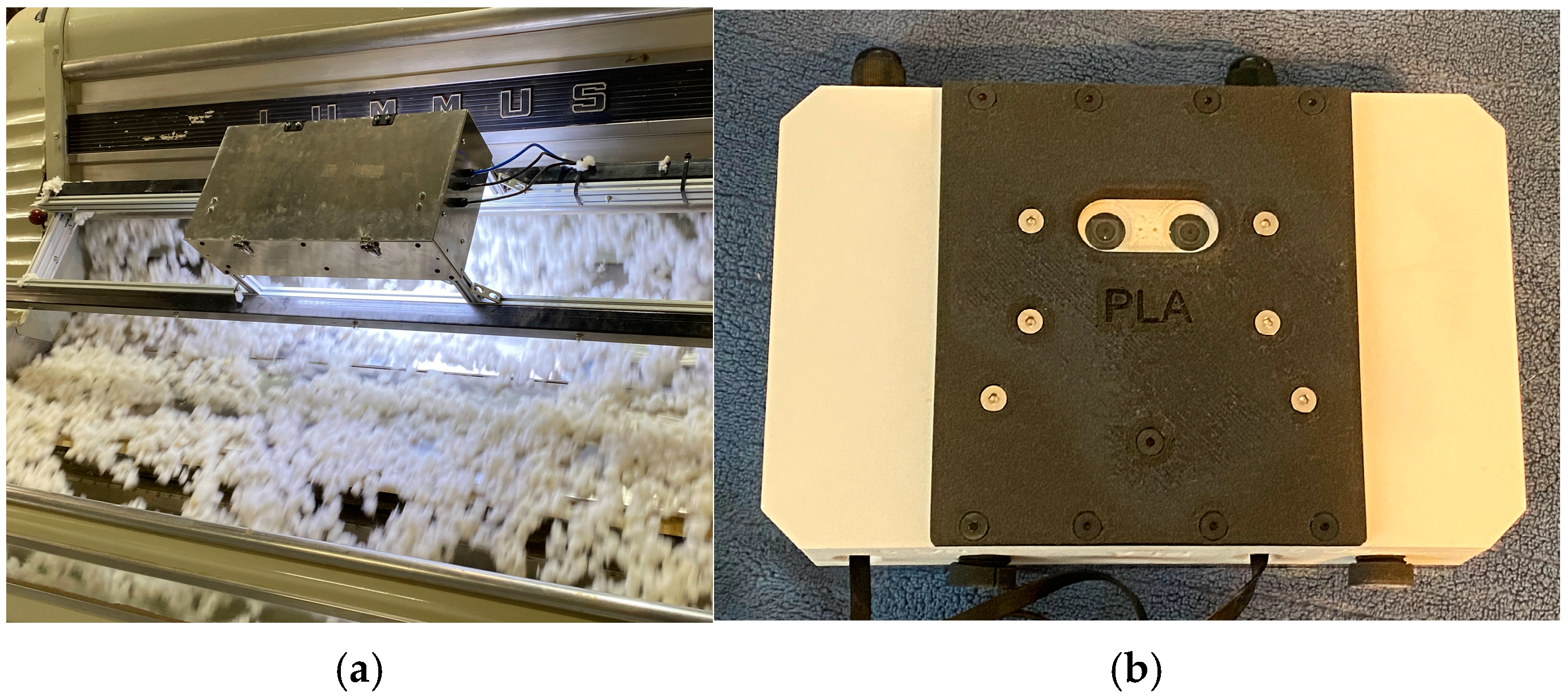Vision-Transformer Model Validation Image Dataset
Abstract
1. Introduction
2. Materials and Methods
3. Summary
Author Contributions
Funding
Data Availability Statement
Conflicts of Interest
References
- Pelletier, M.G.; Holt, G.A.; Wanjura, J.D. A Cotton Module Feeder Plastic Contamination Inspection System. AgriEngineering 2020, 2, 280–293. [Google Scholar] [CrossRef]
- Devine, J.; (Cotton Incorporated, Cary, NC, USA). Cotton Incorporated Economist. Personal Interview, 6 January 2020. [Google Scholar]
- Barnes, E.; Morgan, G.; Hake, K.; Devine, J.; Kurtz, R.; Ibendahl, G.; Sharda, A.; Rains, G.; Snider, J.; Maja, J.M.; et al. Opportunities for Robotic Systems and Automation in Cotton Production. AgriEngineering 2021, 3, 339–362. [Google Scholar] [CrossRef]
- Blake, C. Plastic Contamination Threatens U.S. Cotton Industry. Southwest Farm Press. Available online: https://www.farmprogress.com/node/319085 (accessed on 7 May 2020).
- Adams, G. A Very Serious Matter. Cotton Farming. Available online: https://www.cottonfarming.com/cottons-agenda/a-very-serious-matter/ (accessed on 7 May 2020).
- Ramkumar, S. Plastic Contamination Not Just a Cotton Problem. Cotton Grower. Available online: https://www.cottongrower.com/opinion/plastic-contamination-not-just-a-cotton-problem/ (accessed on 7 May 2020).
- O’Hanlan, M. With Cotton Harvest Underway, Farmers Fear Grocery Bags, and Plastic Contamination. Victoria Advocate. Available online: https://www.victoriaadvocate.com/news/local/with-cotton-harvest-underway-farmers-fear-grocery-bags-plastic-contamination/article_9f8c90b0-c438-11e9-9c61-03c92ae351a7.html (accessed on 7 May 2020).
- Adams, G. A Reputation at Stake. Cotton Farming. Available online: https://www.cottonfarming.com/cottons-agenda/a-reputation-at-stake/ (accessed on 7 May 2020).
- Pelletier, M.G.; Holt, G.A.; Wanjura, J.D. Cotton Gin Stand Machine-Vision Inspection and Removal System for Plastic Contamination: Software Design. AgriEngineering 2021, 3, 494–518. [Google Scholar] [CrossRef]
- Pelletier, M.; Wanjura, J.; Holt, G. Vision-Transformer, ViT, model validation dataset. Zenodo 2024. [Google Scholar] [CrossRef]


Disclaimer/Publisher’s Note: The statements, opinions and data contained in all publications are solely those of the individual author(s) and contributor(s) and not of MDPI and/or the editor(s). MDPI and/or the editor(s) disclaim responsibility for any injury to people or property resulting from any ideas, methods, instructions or products referred to in the content. |
© 2024 by the authors. Licensee MDPI, Basel, Switzerland. This article is an open access article distributed under the terms and conditions of the Creative Commons Attribution (CC BY) license (https://creativecommons.org/licenses/by/4.0/).
Share and Cite
Pelletier, M.G.; Wanjura, J.D.; Holt, G.A. Vision-Transformer Model Validation Image Dataset. AgriEngineering 2024, 6, 4476-4479. https://doi.org/10.3390/agriengineering6040254
Pelletier MG, Wanjura JD, Holt GA. Vision-Transformer Model Validation Image Dataset. AgriEngineering. 2024; 6(4):4476-4479. https://doi.org/10.3390/agriengineering6040254
Chicago/Turabian StylePelletier, Mathew G., John D. Wanjura, and Greg A. Holt. 2024. "Vision-Transformer Model Validation Image Dataset" AgriEngineering 6, no. 4: 4476-4479. https://doi.org/10.3390/agriengineering6040254
APA StylePelletier, M. G., Wanjura, J. D., & Holt, G. A. (2024). Vision-Transformer Model Validation Image Dataset. AgriEngineering, 6(4), 4476-4479. https://doi.org/10.3390/agriengineering6040254






